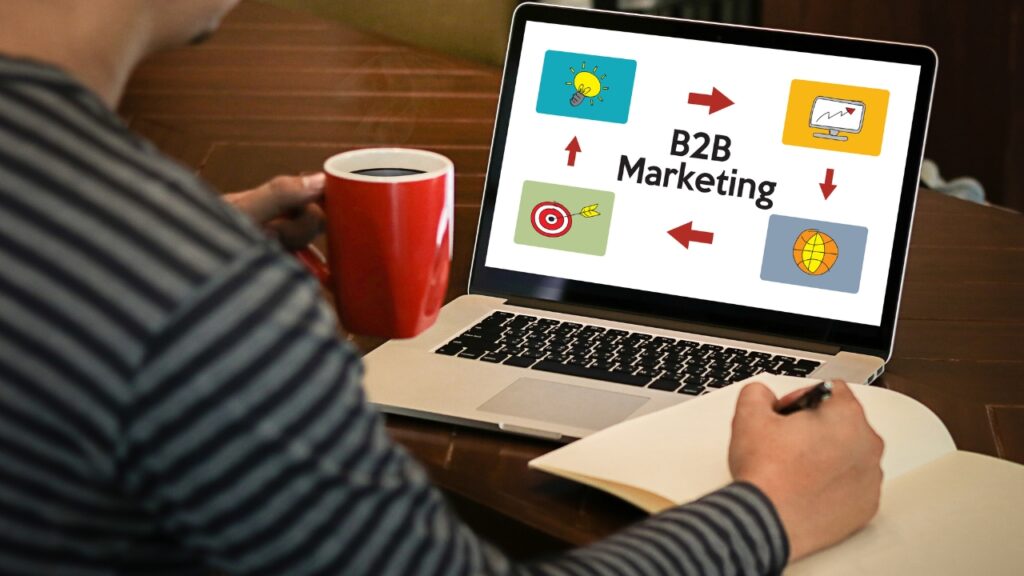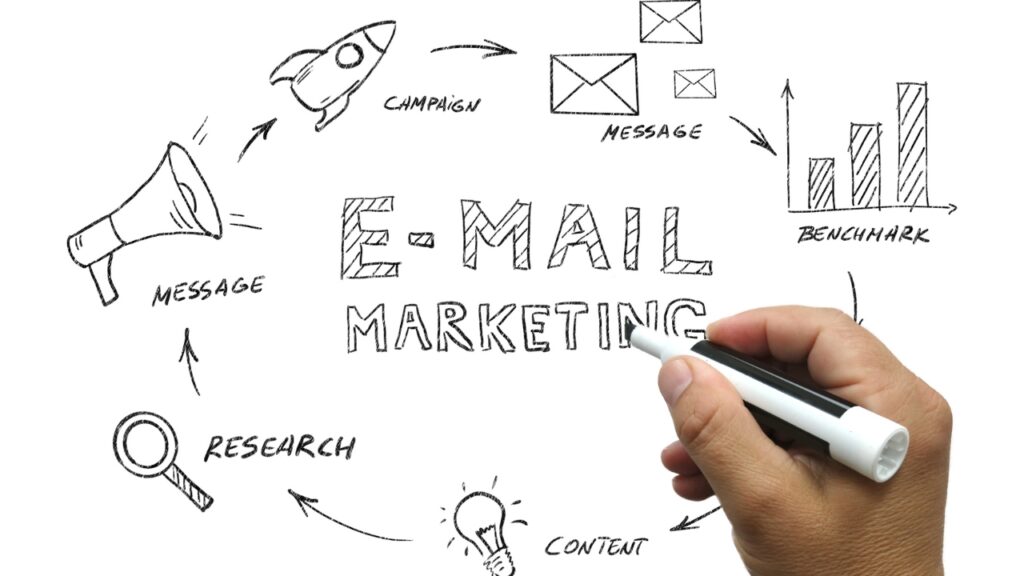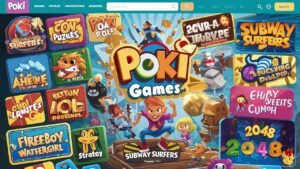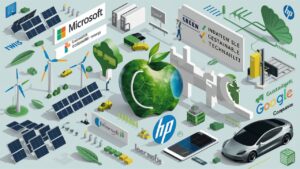Email Marketing B2B Lead Generation: A Comprehensive Guide
What is Email Marketing?
Email marketing involves sending commercial messages to a targeted audience via email. In the realm of B2B lead generation, email marketing serves as a powerful tool for nurturing leads, building relationships, and driving conversions.
Importance in B2B Lead Generation
Email marketing enables businesses to directly engage with prospects and nurture them through the sales funnel. Unlike other channels, such as social media or display advertising, email offers a more personalized and targeted approach to reaching decision-makers in B2B organizations.
Types of Email Campaigns
Promotional Emails
Promotional emails are designed to showcase products, services, or special offers to potential B2B clients. These emails aim to generate interest and drive conversions by highlighting the value proposition of the offering.
Educational Content Emails
Educational content emails provide valuable information to prospects, positioning the sender as a trusted authority in their industry. By offering insights, tips, and resources, businesses can establish credibility and nurture leads over time.
Lead Nurturing Emails
Lead nurturing emails are tailored to the specific needs and interests of individual prospects. Furthermore, through targeted content and personalized messaging, businesses can guide leads through the buying journey, ultimately converting them into customers.
Crafting Compelling Subject Lines
Importance of Subject Lines
Subject lines play a crucial role in determining whether an email gets opened or ignored. Additionally, a compelling subject line should be concise, descriptive, and evoke curiosity to entice recipients to click through.
Best Practices for Subject Line Optimization
- Keep it Short and Sweet: Aim for subject lines that are 50 characters or less to ensure they display properly on mobile devices.
- Personalization: Incorporate the recipient’s name or company name to grab their attention.
- A/B Testing: Experiment with different subject lines to identify which ones resonate best with your audience.
Segmentation and Personalization
Importance of Segmentation
Segmentation involves dividing your email list into smaller, targeted groups based on specific criteria such as demographics, behavior, or purchase history. By segmenting your audience, you can deliver more relevant and personalized content, increasing engagement and conversion rates.
Personalization Strategies for B2B Email Campaigns

- Dynamic Content: Tailor your email content based on the recipient’s preferences, interests, or past interactions with your brand.
- Behavioral Triggers: Use automation triggers to send targeted emails based on actions taken by the recipient, such as website visits or email opens.
- Account-Based Marketing (ABM): Customize email campaigns for high-value accounts to address their unique pain points and challenges.
Designing Engaging Email Content
Visual Elements
Your emails will seem better and draw the receiver in if you include visually appealing content like photos, videos, and infographics. To ensure that the visuals complement rather than take away from your message, you must strike the right balance.
Copywriting Techniques
Effective copywriting is essential for conveying your message clearly and persuasively. Keep your copy concise, relevant, and benefit-focused to resonate with B2B decision-makers. Moreover, use compelling language and persuasive calls to action to encourage recipients to take the desired action.
Call to Action (CTA) Optimization
Importance of CTAs
CTAs are the driving force behind email conversions, prompting recipients to take the next step in the buyer’s journey. Additionally, CTAs should be obvious, enticing, and clearly placed inside your email content—whether the action is downloading a whitepaper, setting up a demo, or completing a purchase.
Best Practices for CTAs in B2B Emails
- Use Action-Oriented Language: Encourage recipients to take immediate action by using verbs such as “Download,” “Register,” or “Request a Demo.”
- Create a Sense of Urgency: Incorporate time-sensitive language to motivate recipients to act quickly, such as “Limited Time Offer” or “Act Now.”
- Optimize Placement: Position your CTA prominently within your email content, ensuring it’s visible without the need for scrolling.
Email Automation
Benefits of Automation
Email automation streamlines sending targeted messages to prospects at various stages of the buyer’s journey. By automating repetitive tasks such as lead nurturing, follow-ups, and re-engagement campaigns, businesses can save time and resources while maintaining consistent communication with their audience.
Examples of Automated B2B Email Workflows
- Welcome Series: Introduce new subscribers to your brand and nurture them through a series of automated emails that provide valuable information and resources.
- Lead Nurturing Campaigns: Deliver targeted content based on the prospect’s behavior and engagement level to guide them through the sales funnel.
- Re-Engagement Campaigns: Reach out to inactive subscribers with personalized offers or incentives to rekindle their interest and encourage them to re-engage with your brand.
Measuring Email Marketing Success
Key Metrics to Track
- Open Rate: The percentage of recipients who open your email.
- Click-Through Rate (CTR): The percentage of recipients who click on links or CTAs within your email.
- Conversion Rate: The percentage of recipients who take the desired action, such as making a purchase or filling out a form.
- Unsubscribe Rate: The percentage of recipients who unsubscribe from your email list.
Tools for Email Marketing Analytics
- Google Analytics: Track email campaign performance and user behavior on your website.
- Email Service Provider (ESP) Analytics: Utilize built-in analytics tools provided by your email marketing platform to monitor campaign metrics and performance.
- A/B Testing Tools: Test different elements of your email campaigns, such as subject lines, CTAs, and content, to optimize performance and drive better results.
Common Challenges in Email Marketing B2B Lead Generation

Deliverability Issues
One of the most common challenges in B2B email marketing is ensuring that your emails actually reach the intended recipients’ inboxes. Moreover, factors such as spam filters, email authentication protocols, and inbox overcrowding can impact deliverability rates. To mitigate this challenge, it’s essential to adhere to email best practices, such as maintaining a clean email list, avoiding spammy content, and utilizing double opt-in processes to confirm subscriber consent.
Overcoming Email Fatigue
In today’s digital landscape, B2B professionals are inundated with a constant stream of emails, making it challenging for your messages to stand out amidst the noise. Furthermore, email fatigue occurs when recipients become overwhelmed or disengaged with the sheer volume of emails they receive, leading to decreased open and engagement rates. To combat email fatigue, focus on delivering high-value content that is relevant, personalized, and timely. Additionally, consider implementing frequency capping and segmentation strategies to ensure your emails are spaced out and tailored to the recipient’s preferences.
Future Trends in Email Marketing
AI and Machine Learning Integration
The integration of Artificial Intelligence (AI) and machine learning (ML) technologies is poised to revolutionize the future of email marketing. Additionally, AI-powered algorithms can analyze vast amounts of data. They predict customer behavior and personalize content. They also optimize email campaigns for maximum impact. With the use of AI and ML, B2B email marketing campaigns may be more effective and efficient. This is achieved through automated content creation and predictive analytics. These advancements offer previously unheard-of possibilities for marketers.
Personalization at Scale
Personalization at scale is going to be more and more crucial as B2B marketers work to provide their audience with more tailored and relevant experiences. Furthermore, marketers can now design hyper-targeted email campaigns. These campaigns are customized to each recipient’s specific needs and preferences. This is made possible thanks to developments in data analytics, segmentation strategies, and dynamic content creation. Additionally, enterprises may achieve greater engagement and conversion rates. They can do this by utilizing automation technology and data-driven insights. This enables them to provide customized experiences at scale.
Expert Insights
John Doe, Marketing Consultant
“Email marketing remains a cornerstone of B2B lead generation strategies. By delivering valuable content to prospects at the right time, businesses can nurture leads and cultivate lasting relationships with their target audience.”
Final Words:
To sum up, it is still the go-to tactic for Email Marketing B2B Lead Generation since it provides unmatched chances to interact with potential customers, foster connections, and increase conversions. Moreover, businesses may fully realize the potential of email marketing as a potent marketing channel in the dynamic B2B landscape by grasping its subtleties, utilizing cutting-edge techniques and technologies, and keeping up with changing trends.
Frequently Asked Questions (FAQs)
How to generate B2B leads for email marketing?
Learn effective strategies to identify and attract potential B2B clients through targeted outreach, content marketing, and networking.
Is email marketing good for lead generation?
Yes, email marketing is a highly effective tool for B2B lead generation, offering direct communication with prospects and opportunities for personalized engagement.
How do I start B2B email marketing?
Begin by building a targeted email list, crafting compelling content, designing visually appealing templates, and implementing automation tools for efficient outreach.
What are B2B email leads?
B2B email leads refer to contact information of businesses and decision-makers obtained through lead generation efforts, which can be used for targeted email marketing campaigns.
How do I sell my B2B email?
Sell your B2B email by highlighting its quality, relevance, and potential ROI to potential buyers, emphasizing its ability to drive engagement and conversions.
How do I find B2B leads online?
Utilize various online channels such as social media, industry forums, business directories, and lead generation tools to identify and connect with potential B2B leads.
What is the best email marketing strategy?
The best email marketing strategy involves personalized content, segmentation, automation, A/B testing, and analytics tracking to optimize engagement and conversion rates.
How do I find leads for email marketing?
Find leads for email marketing by defining your target audience, leveraging lead generation tactics, offering valuable incentives, and nurturing relationships through consistent communication.
How to successfully do email marketing?
Successfully execute email marketing by setting clear goals, understanding your audience, delivering relevant content, optimizing for mobile, monitoring performance metrics, and continually refining your strategy.














1 comment